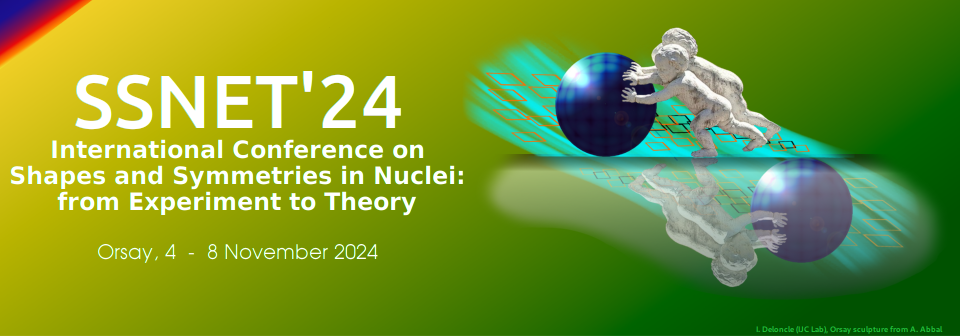Orateur
Description
Double alpha decay, a simultaneous emission of two alpha particles by the nucleus, is a possible rare decay mode first discussed in 1979 [1]. This decay was considered as two competing processes: immediate two particle emission or the emission of a 8Be-cluster with its instantaneous disintegration. However, the predicted half-lives for trans-lead isotopes were found to be too long for simple observation [2]. Recent microscopic calculations [3] show that expected kinematics of two-particle decay is symmetric, back-to-back emission of alpha particles, and the predicted branching ratio of the double alpha mode is on the order of 10-8 compared to conventional alpha decay, which would allow detection of such rare events in a coincidence measurement.
A dedicated experiment to the search for double alpha decay was conducted in 2022 at the FRS Ion Catcher (GSI), a universal system to perform decay and laser spectroscopy and mass measurements of heavy ions. An offline 228Th source was used to produce 224Ra recoil ions that were transported to a high geometry detector. Two sensitive silicon strip detectors detected all charged particles emitted by 224Ra. The number of registered decay events is on the order of 109 which should be sufficient to test the theoretical prediction. Details on the design and performance of the experiment have been recently published [4].
Data obtained during a 4-month measurement are currently being analyzed. In this talk, we will present intermediate results necessary for the complete estimation of the background from decay products of 224Ra. In particular, details of the energy and time calibrations will be shown. A detailed geometry model used with the hit-pattern information and Monte Carlo simulations that describe random coincidences will be discussed.
- Yu. N. Novikov, “Some features of nuclei close to the boundaries of nucleon stability,” in Int. Workshop on U-400 Program. JINR (1979).
- D. Poenaru, M. Ivascu, J. Physique Lett. 46, 591–594 (1985).
- F. Mercier et al., Phys. Rev. Lett. 127 (2021) 012501.
- L. Varga et al., NIM A 1063 (2024) 169252.

